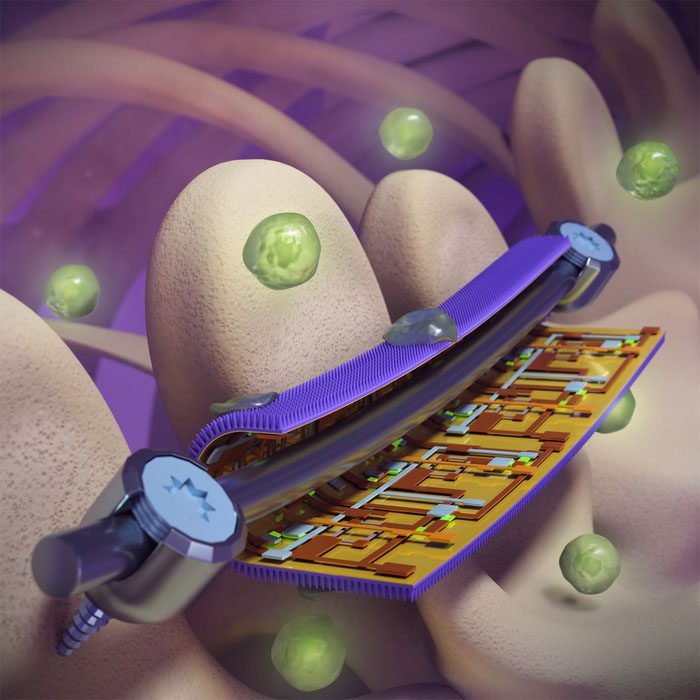If you think that insects and orthopedic surgery have nothing in common, you are very wrong! Inspired by the wings of dragonflies and cicadas (always blessed la biomimetics) a team of researchers at the University of Illinois has developed “smart” coatings for orthopedic implants that fight infection and monitor mechanical stress on the device.
Nanostructures hunting for bacteria
The wings of cicadas and dragonflies have a special nanostructure capable of killing bacteria: their surface is covered with tiny "poles" that pierce the cell walls of bacteria that try to rest on it, killing them. No antibiotics, no drugs, effective even against resistant bacterial strains.
Bacterial infections and orthopedic implant failures are very common problems: they can affect up to 10% of patients. For this reason, scientists have taken their cue from them, also adding a plus. Which?
Flexible sensors to keep an eye on the healing process

On the flip side of the antibacterial coating they developed, scientists led by prof. Qing Cao have integrated flexible electronic sensors to monitor the mechanical stress experienced by orthopedic implants.
Thanks to this information, doctors can follow the patient's healing process more closely. A factor that optimizes rehabilitation and allows for timely intervention in the event of device problems.
Tests on orthopedic implants
In their study published in Science Advances (I link it here), the researchers tested the antibacterial coatings on mice, and with sheep they tested commercially available orthopedic implants enhanced by the new flexible sensors.
The results? Very promising: no signs of infection in mice, even when the bacteria were intentionally introduced, and accurate monitoring of mechanical stress on sheep's orthopedic implants.

Smart orthopedic veneers and implants: a bright future
These “intelligent” coatings open new avenues for orthopedics and medicine in general. Their effectiveness in preventing infections and monitoring the healing process could significantly improve patients' quality of life and reduce healthcare costs. Once again, thanks to mother nature: thank you, master dragonflies and cicadas, also for the next revolution in the field of orthopedic implants.


